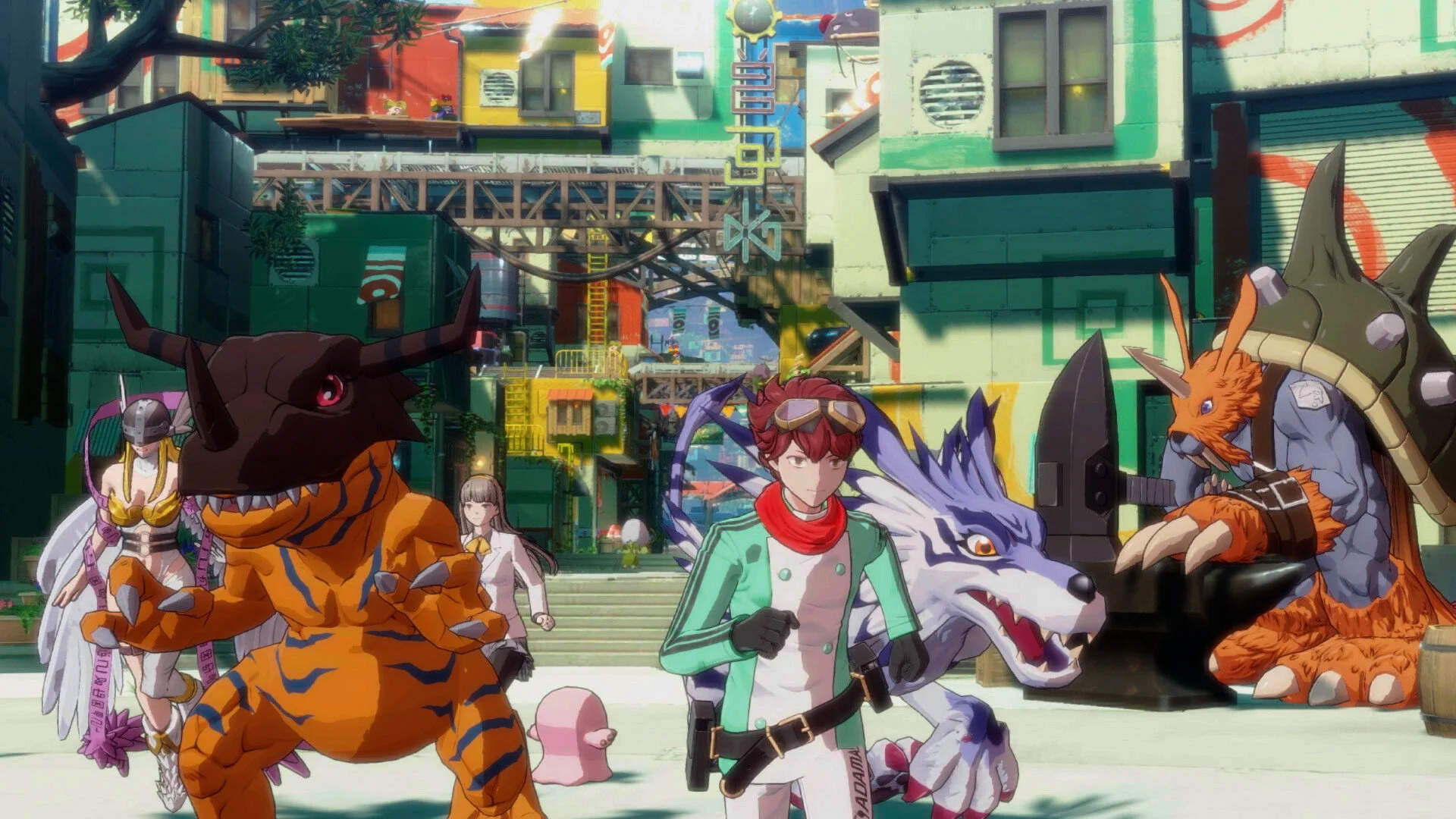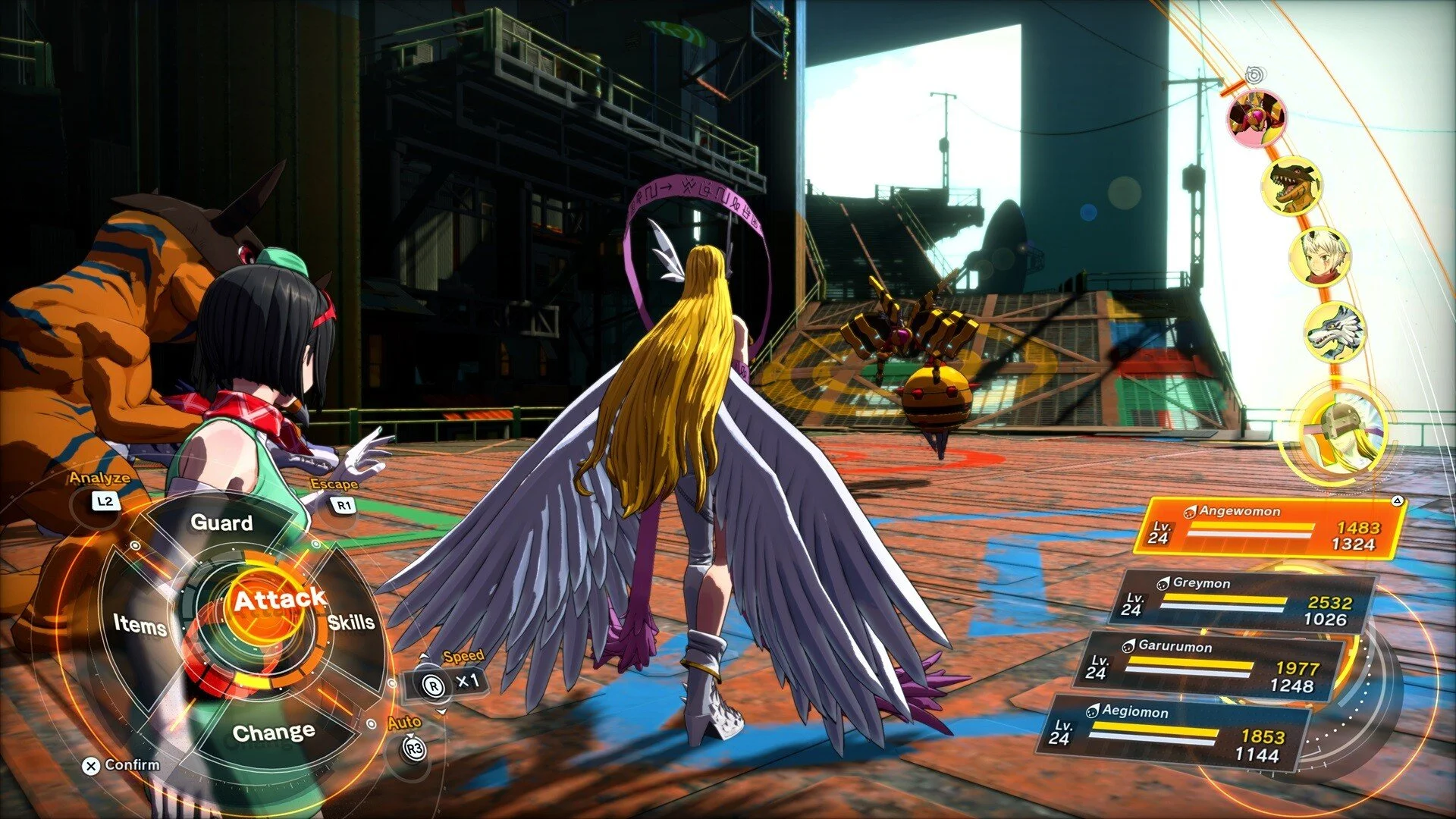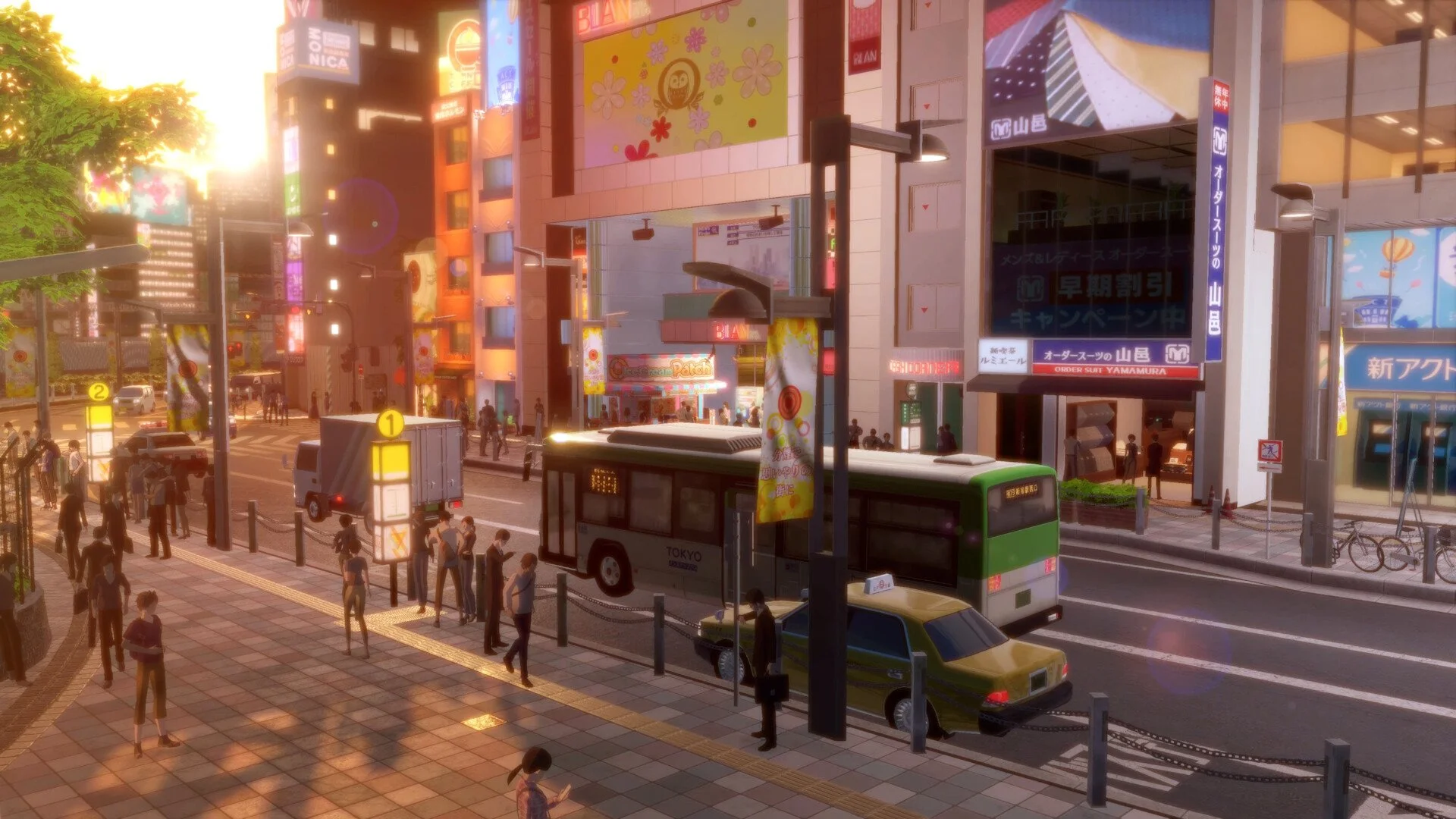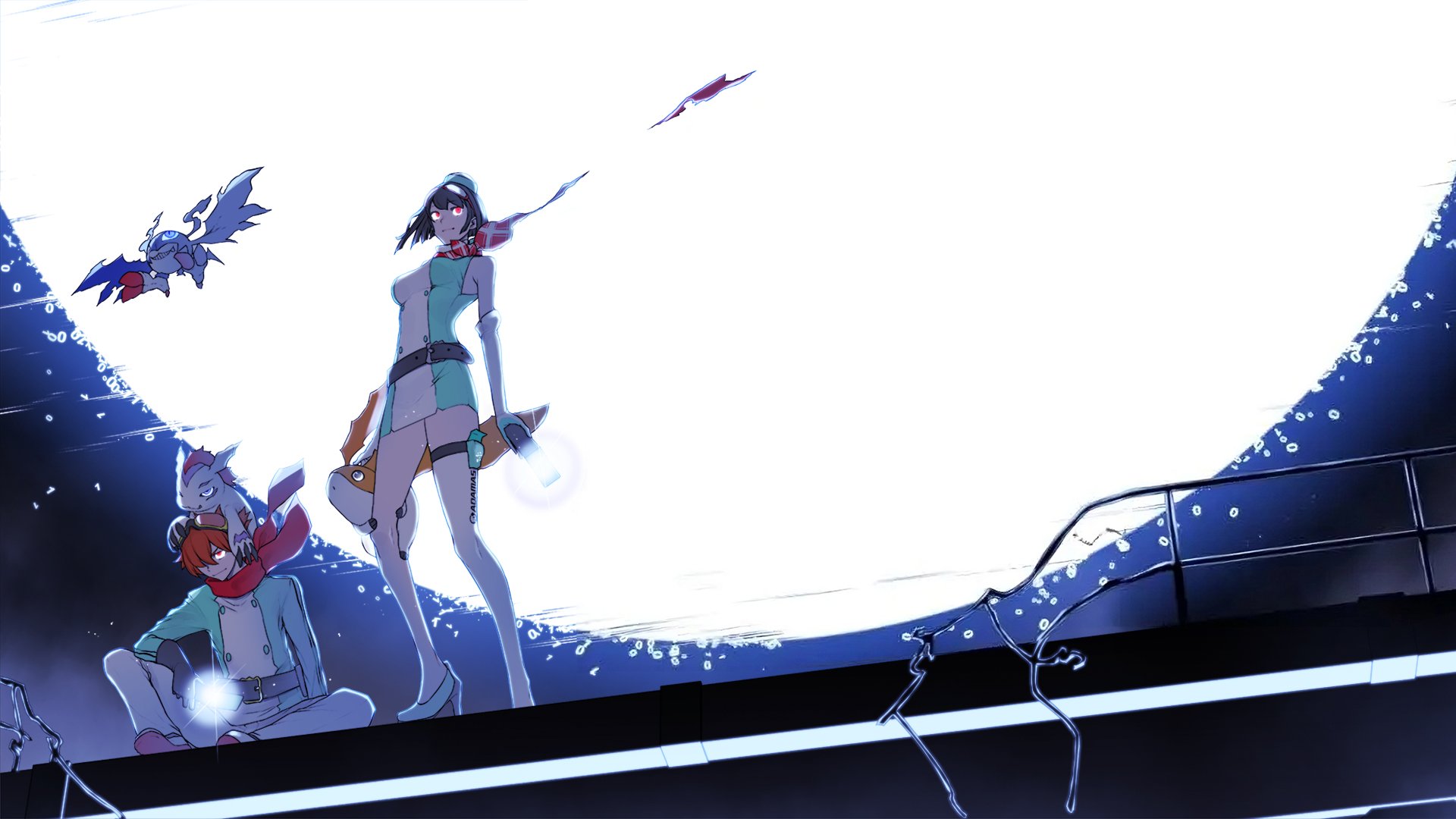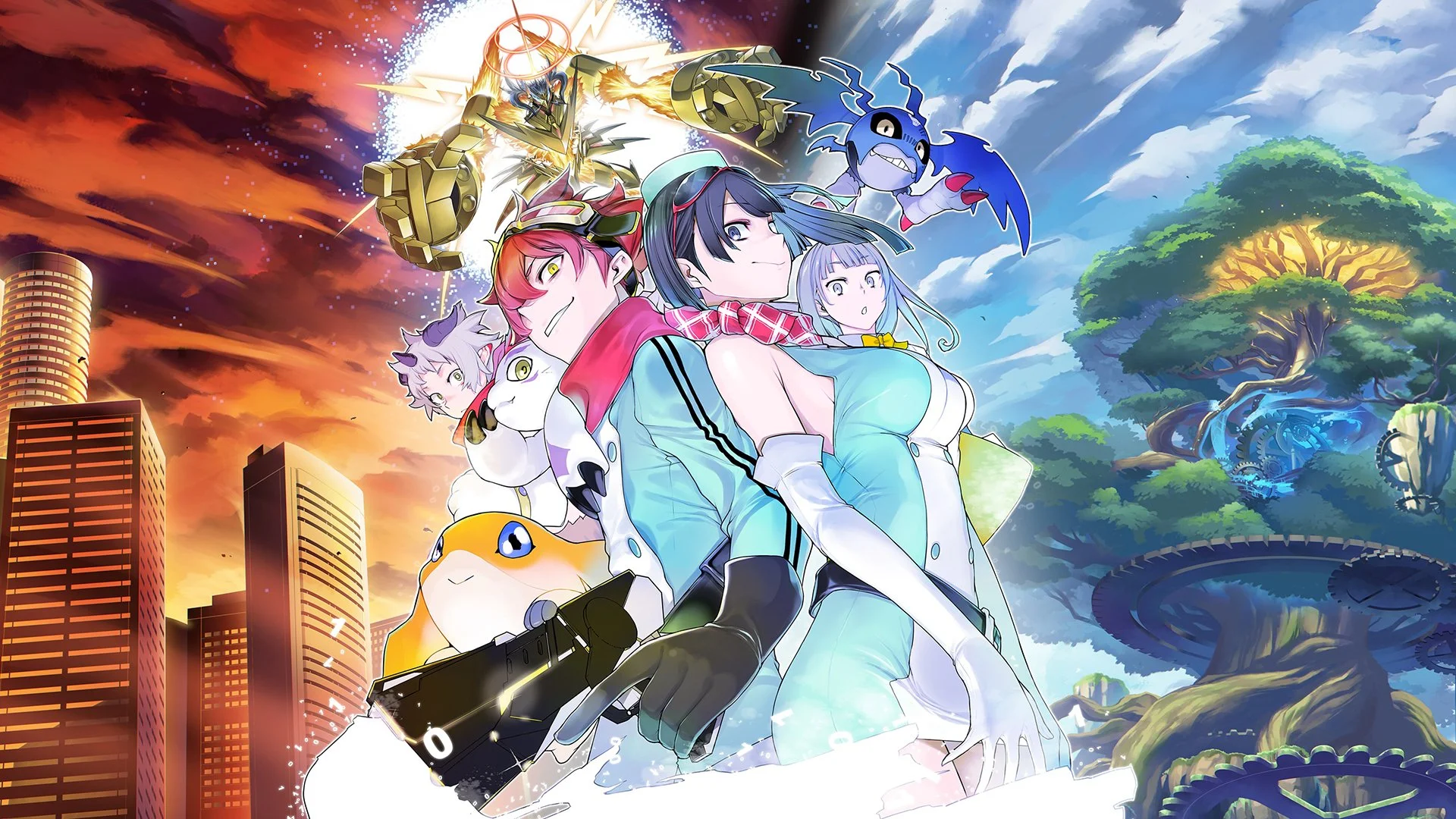Digimon Story Time Stranger - Review

ADAMAS has been tasked with preventing phenomena. It’s up to you Agent to ensure that humanity is kept safe. Can you handle the task? Or will the wild Digimon prove too much for you to overcome?
Bandai has brought us Digimon Story: Time Stranger, a change in trajectory for the series after the last few entries we’ve had from the Digital World. Digimon Story: Time Stranger is a turn-based RPG with a monster creating (rather than catching) mechanic, that fully utilizes over 400 different Digimon to allow you to experience the world of Digimon and the story of Illiad and Shinjuku in a way that the games haven’t ever done before. How does Time Stranger stack up? Is it a time travelling bundle of fun? Or is it just a big old pile of Sukamon?
Time Stranger is easily one of the most accessible, but simultaneously challenging games from the Digital World. The digivolution system while confusing at first, is probably the quickest to understand and use, while being so heavily varied that you’ll never be starved for choice on what Digimon you have at your disposal, or what choices you can make for your team for every battle. With over 400 Digimon to use, you’ll find that you are almost overwhelmed with options at times.
Digivolving your Digimon is somewhat complex in the way to approach it, but after ten or so hours it will likely click. You need certain stats on your Digimon a particular Agent Rank level, and occasionally a specific item, in true Digimon style, to be able to digivolve. Each stage of Digimon will have a number of options you can chose to Digivolve to, or Digivolve down from, that are restricted by the stats. If you find yourself at a point where you hit a level cap on a Digimon but can’t get the stats required for a Digivolution, Dedigivolving all the way back to a baby form Digimon and then Digivolving back up at the level cap at each stage will allow you to get toward the stats you need for the Digivolution you are seeking, while also increasing the level cap at each stage of their Digivolution. It sounds complex, but once you’ve played around with it a bit, it becomes the easiest system that the games have ever used.
Combat works on the traditional combat triangle of the Digital World. Vaccine-type Digimon beat Virus type. Virus type beat Data type. Data type beat Vaccine type. There are few other types of Digimon that exist outside this triangle. They don’t benefit from resistance to other types, but they also don’t suffer weakness to others as a result. There isn’t a huge amount of these non-standard Digimon throughout the game, but they do exist. You’ll get natural abilities and unique abilities to each Digimon with different elemental affinities which do expand the weakness and resistance factors even further, being able to do anywhere up to 400% more damage to as low as 30% and even a complete resistance of 0% in some circumstances.
You have a team of six Digimon to actively use at any time, with the ability to switch out your team members with your banked Digimon outside of battles. A great choice, and one that allows you to re-strategise and change your team on the go is the ability to switch your active team members out with any of your three reserve members, which doesn’t use up that Digimon’s turn. Meaning you can change to the stronger and more effective types in battles, and swap out ones at risk, without being punished for doing so. This becomes incredibly poignant in harder mini-boss and major boss battles. Swapping in a buffing Digimon that may be weak to the boss, so they can buff, and then be swapped out on their next turn without losing 2 turns to do so. Boss fights are pretty punishing here and require a fair bit of strategic play. Having a good spread of Virus, Vaccine and Data type Digimon will allow you to approach boss battles effectively and be the right level of strategic to beat these surprisingly difficult fights.
As the name implies, Digimon Story: Time Stranger is a RPG story about being a stranger in time. After the opening events of the game, you’ll find yourself thrown backwards eight years in time. Still somehow in contact with your operator at ADAMAS, you’re told about a world ending apocalyptic event occurring in the future, and you must find a way to prevent the Shinjuku Inferno from ending the world. Time Stranger takes the idea of traditional time travelling narratives and switches it up a little bit. Using time travel as a means of changing major events that lead to the collapse of the world, on top of multi-year time jumps at different points through the story. Couple this with a serious and somewhat dark narrative, and Digimon Story: Time Stranger might have the most compelling gameplay loop and narrative out of any previous Digimon games.
There is several side missions that will come up as you play through the game. While they don’t do a tremendous amount to further the main story, they do reward you with some decent items to use in battle and are the main method of acquiring Anomaly points. Anomaly points are essentially talent points, that you use on your Agent skills, and in turn to level up your Agent Rank. The agent skills allow you to unlock boosted experience rates, changes how much different skills increase at based on a Digimon’s personality (which that is a world of complexity to delve into). Problematically, there was several side missions where I was required to wear a certain outfit to be able to do the mission. The outfits, however, were DLC outfits, and I have yet to find a different way of acquiring these outfits in game, or any other purchasable outfit that exist in the game world. This might be because I own them already, so they don’t display, but in the event that this isn’t the case. Locking several side missions behind a DLC item, that reward essential Anomaly points is an obnoxious choice, and something to note.
One of the big parts of the advertising for Digimon Story: Time Stranger was that you would be able to travel back and forth between the Digital World and the Real World and engage in gameplay and with Digimon in both worlds. While this is technically true, it may be a little bit overblown on the reality of it. While you will spend some time in the Real World, and engage in battles there, a good 70-80% of the game itself occurs in the Digital World, with only small moments going back to the real world. It also is never as simple as just swapping between the two, the option not even being available until almost 20 hours in. On a narrative level this makes sense, but if you were coming into the game thinking you’d be going between the two worlds a little more actively, be more prepared for a Digimon Adventures style journey, than a Digimon Movie one. Its not a major problem, but it is something that people are going to want to be aware of.
Digimon Story: Time Stranger despite a couple of odd choices in side missions and the under utilisation of the real world, is a fantastic game. The Digivolution system is deep, extremely varied but simple enough to get into. There is hundreds of Digimon to play with and hundreds of different ways to approach the game as a result. The story is incredibly well put together and paces itself just right that if never feels like its dragging too heavily between longer gameplay sections, as JRPGs can be prone to. A fantastic entry, a great launching off point for people getting into Digimon or returning to the digital world. Digimon Story: Time Stranger sets a bar for ‘monster catching’ style games here, that others looking to enter this market, or stalwarts who haven’t changed their formulas, should really look at and consider as a future direction for their own games.
The Score
8.5
Review code provided by Bandai Namco
The Pros
Hundreds of Digimon to play with
A simple to understand battle system with great strategic depth
Powerful story that will keep you hooked and wanting to know more
The Cons
Side missions feel like they exist a little bit in a void
Real World isn’t utilised as much as it could have been
DLC items being required for essential in game rewards is an egregious choice

